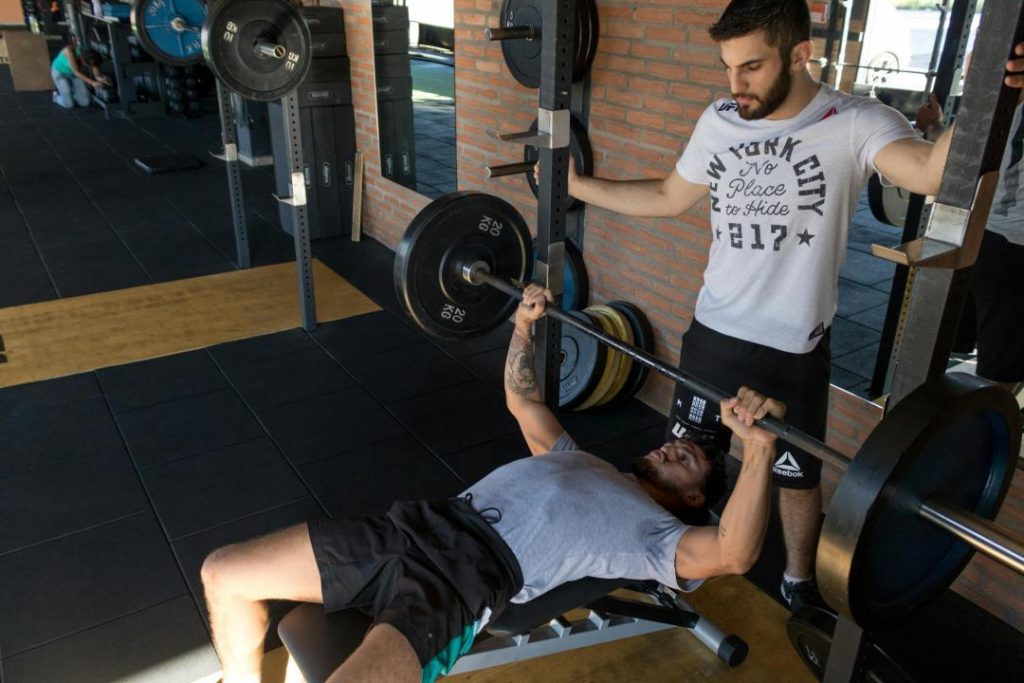
New Study Shows Best Way to Fix Bench Press Muscle Imbalances
As athletes and fitness enthusiasts, we’re always looking for ways to optimize our performance and reduce the risk of injury. One key aspect of achieving this is identifying and addressing muscle imbalances, particularly in exercises like the bench press. A recent study published in Frontiers in Physiology has shed light on the most effective way to fix bench press muscle imbalances, and the findings are both fascinating and practical.
The study, conducted by researchers from the University of São Paulo, Brazil, aimed to investigate the effects of asymmetric bench press training on muscle activation and performance. The team recruited 24 male participants with a history of bench press training and divided them into three groups: a control group, a group that performed bench press with a small weight shift of 2%-4% to the weaker side, and a group that performed bench press with a heavier weight shift of 6%.
The researchers found that the group that performed bench press with a small weight shift of 2%-4% to the weaker side experienced a significant increase in muscle activation of the weaker side, without any significant loss in performance. In contrast, the group that performed bench press with a heavier weight shift of 6% showed increased fatigue and core compensation, which suggests that this type of training may not be the most effective way to address muscle imbalances.
So, what does this mean for us? The study suggests that adding a small weight shift of 2%-4% to the weaker side during bench press can be an effective way to boost muscle activation and address muscle imbalances, without compromising performance. This is because the small weight shift creates a mild asymmetry that challenges the weaker side, without overwhelming the stronger side.
On the other hand, the heavier weight shift of 6% may actually be counterproductive. By shifting too much weight to the weaker side, you may be creating an imbalance that’s difficult for your body to compensate for. This can lead to increased fatigue and decreased performance, as your body struggles to maintain proper form and control.
So, how can we apply these findings to our own training? Here are a few tips to help you fix bench press muscle imbalances and optimize your performance:
- Start with a small weight shift: Begin by adding a small weight shift of 2%-4% to the weaker side during bench press. This will create a mild asymmetry that challenges the weaker side without overwhelming the stronger side.
- Focus on proper form: Make sure to maintain proper form and control throughout the exercise. Avoid sacrificing form for the sake of increasing the weight or trying to compensate for the weaker side.
- Gradually increase the weight shift: As you become more comfortable with the small weight shift, you can gradually increase the amount of weight you shift to the weaker side. However, be careful not to shift too much weight, as this can lead to decreased performance and increased fatigue.
- Incorporate variations and progressions: To further challenge your body and promote strength balance, consider incorporating variations and progressions to your bench press training. For example, you can try paused bench press, slow-motion bench press, or incline bench press.
- Monitor your progress: Pay attention to your progress and adjust your training as needed. If you find that you’re struggling to maintain proper form or experiencing decreased performance, it may be necessary to reduce the weight or shift less weight to the weaker side.
In conclusion, the study published in Frontiers in Physiology provides valuable insights into the best way to fix bench press muscle imbalances. By incorporating a small weight shift of 2%-4% to the weaker side during bench press, you can boost muscle activation and optimize your performance without compromising form or control. Remember to focus on proper form, gradually increase the weight shift, and incorporate variations and progressions to your training to achieve the best results.
Source:
https://thepfc.club/blogs/news/understanding-asymmetric-bench-press-training






